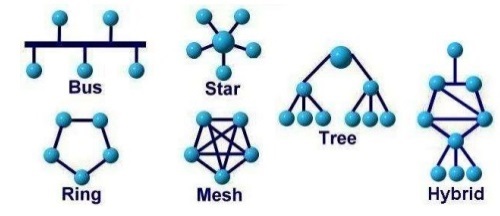Topology is a layout of various elements of computer network, such as nodes, links, routers, etc. It is a network topological structure which can be depicted logically or physically. Physical topology shows the physical location of network's components and cable connections between network nodes. Logical topology describes the data flows, the circulation of signals in physical topology. The physical and logical topologies for two networks can be identical, while their physical interconnections, the distances between nodes, transmission rates, and/or signal types may be differ
Flow control is the process of managing the rate of data transmission between two nodes to prevent a fast sender from outrunning a slow receiver. It provides a mechanism for the receiver to control the transmission speed, so that the receiving node is not overwhelmed with data from transmitting node. Flow control should be distinguished from congestion control, which is used for controlling the flow of data when congestion has actually occurred. Flow control mechanisms can be classified by whether or not the receiving node sends feedback to the sending node.
2.1 Different Types of N/w Topologies
Network Topology is the schematic description of a network arrangement, connecting various nodes(sender and receiver) through lines of connection.
Network topological are categorized into Bus, Ring,Star,Tree,Mesh and Hybrid. Below fig shows the different types of topologies

1. Bus: Bus topology uses one main cable to which all nodes are directly connected. The main cable acts as a backbone for the network. One of the computers in the network typically acts as the computer server. The first advantage of bus topology is that it is easy to connect a computer or peripheral device. The second advantage is that the cable requirements are relatively small, resulting in lower cost.
2. Star: In star topology, each computer is connected to a central hub using a point-to-point connection. The central hub can be a computer server that manages the network, or it can be a much simpler device that only makes the connections between computers over the network possible.
3. Ring: In ring topology, the computers in the network are connected in a circular fashion, and the data travels in one direction. Each computer is directly connected to the next computer, forming a single pathway for signals through the network. This type of network is easy to install and manage.
4. Tree Topology: It is also known as the hierarchical topology. It can be considered as the combination of linear bus and star topologies as it contains systems with star topology connected to a linear bus main cable. There is dependency on the main linear bus line, and therefore any fault in this line can bring the entire segment down. However, this type of arrangement is supported by many hardware and software tenders. This topology is also known as expanded star topology. The configuration and wiring is difficult in comparison to other topologies. However, its point to point wiring for individual sections is a desirable feature of this topology.
5. Mesh Topology: In this type of arrangement every node participating in the network is connected to every other node. However, this tends to be very expensive and difficult to implement. Multiple paths are can be used for transmitting a message. Due to the presence of dedicated links, it does not provide any traffic problem.
6. Hybrid Topology: It refers to the arrangement which is basically a combination of any two or more different types of network topologies. This arrangement is known for its flexibility and reliability.

